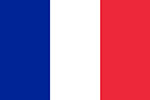EUGÈNE BOUDIN – 1824-1898
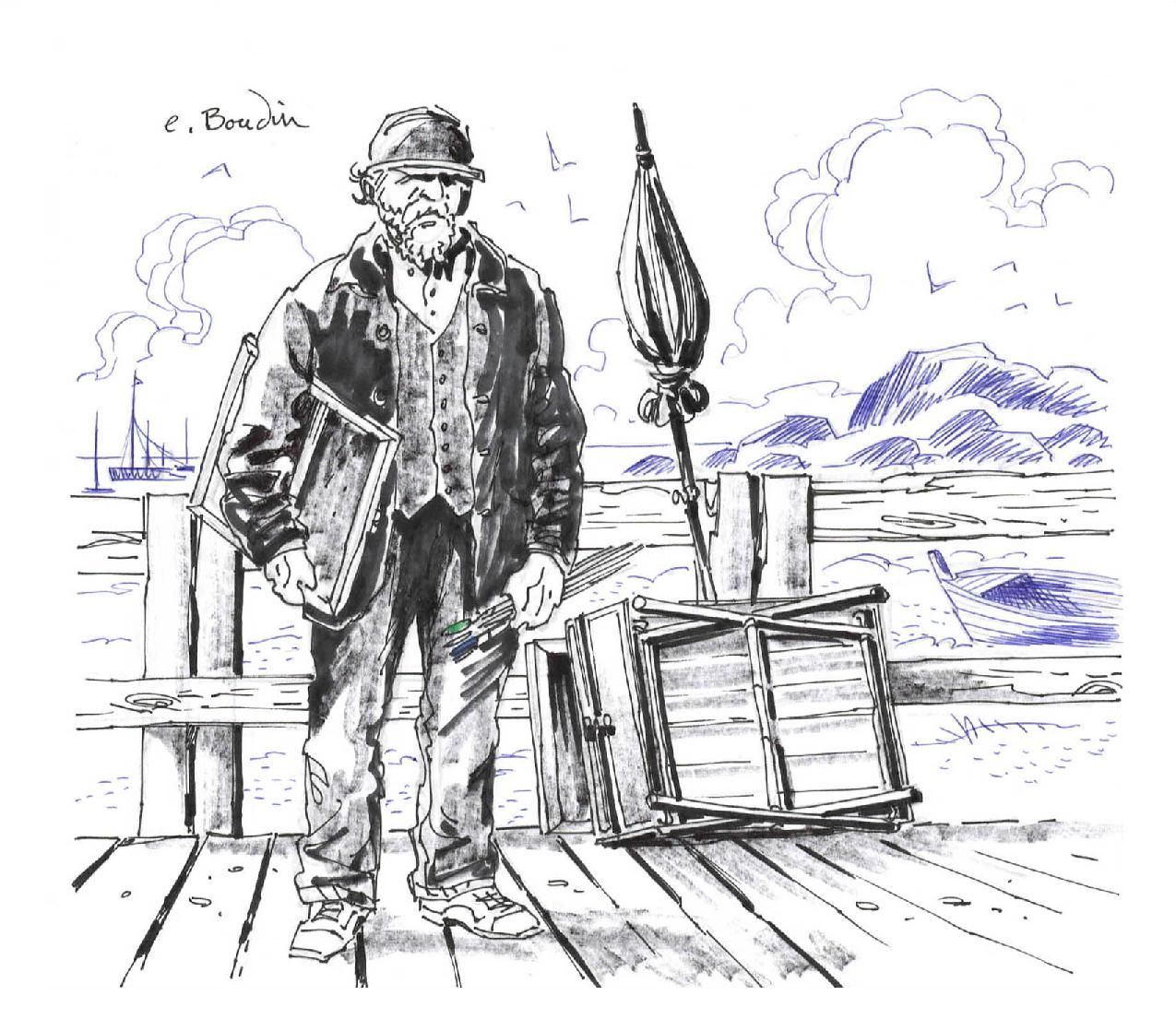
Eugène Boudin – Erwan Le Saëc
Eugène Boudin was born in Honfleur on July 12, 1824 and died in Deauville on August 8, 1898.
Son of a sailor, the young Boudin accompanied his father as a ship’s boy on the Le Havre-Hambourg route.
He naturally loved and knew the sea, and was very familiar with ships.
When his family moved to Le Havre, Boudin was placed as a young clerk in a stationery store. He was able to develop his artistic inclination by pencilling with passion and determination. With a partner, the young man soon set up his own stationery and framing business.
There he met painters, to whom he showed his first attempts, and who encouraged him to pursue his artistic path. In 1851, thanks to good contacts and a three-year scholarship, he was able to enroll as a copyist at the Louvre, in Eugène Isabey’s studio. Here he met Jongkind, Courbet and Monet, with whom he became close friends. The trio of Monet, Jondkind and Boudin mutually enriched each other’s research into the treatment of color, the mastery of watercolors and the subtlety of framing.
Charles Baudelaire saw Boudin’s pastel studies of skies and admired his compositions for their accuracy. As an astute critic, he appreciated the painter’s atmospheric effects. “You can guess the season, the time and the wind”, he wrote in 1859.
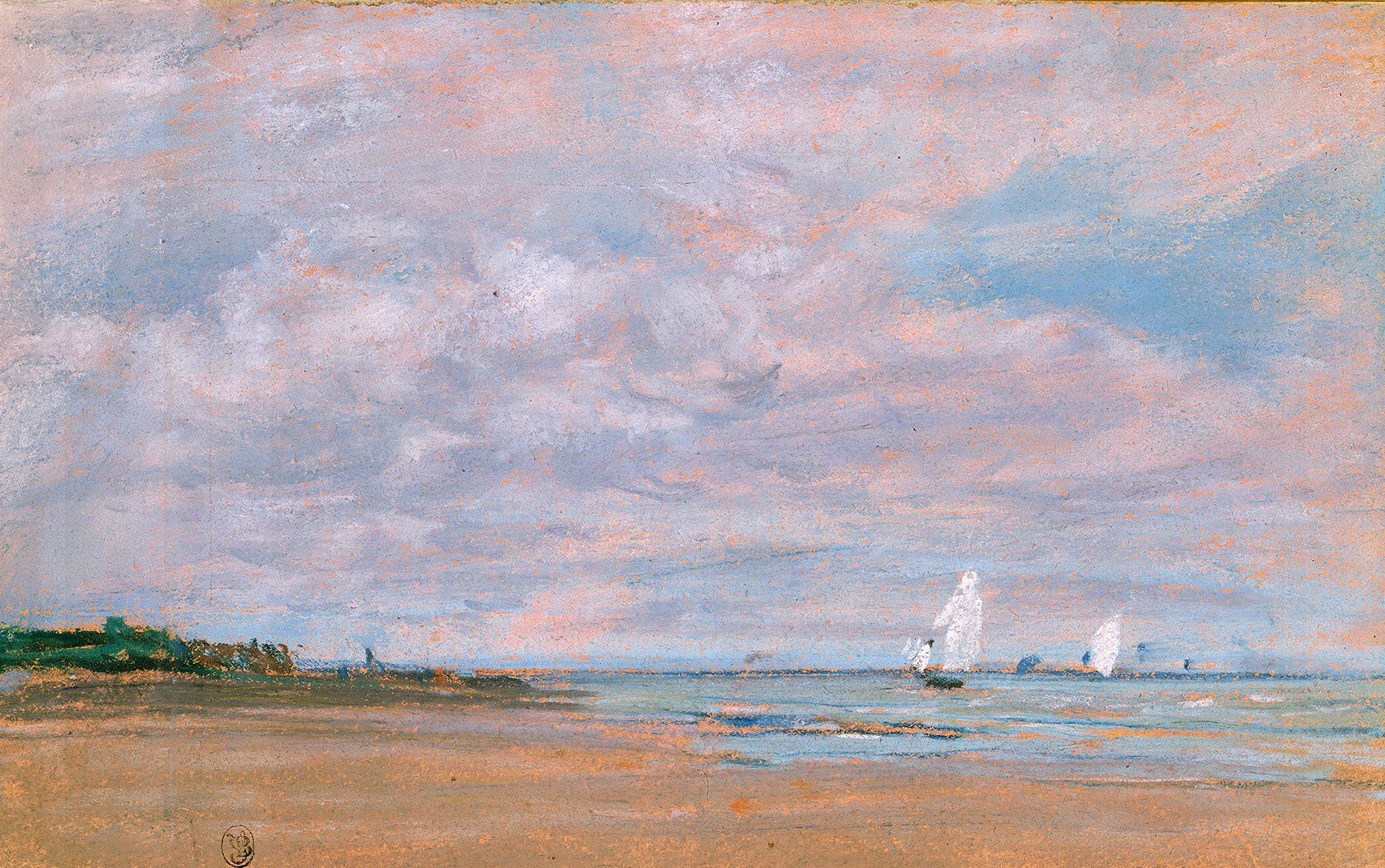
Etude de ciel (pastel) – Eugène Boudin – (collection particulière)
Yet Boudin’s work is still far from being fully appreciated.
He was dependent on dealers who sold directly to collectors, without him receiving any direct profits. Official recognition came in the 1880s, when the French state bought his paintings from the Salon.
Unable to bring himself to live in Paris, he remained faithful to Normandy, returning regularly to Honfleur.
Despite the difficulties and his precarious financial situation, he continued his research into light.
He discovered Brittany around 1855, visiting every summer until 1878, and again in 1897.
Eugène Boudin felt the need to paint his canvases on the spot, in the open air.
The new weekly boat service from Le Havre to Morlaix enabled him to travel to Finistère in 1857, where he discovered a diversity of subjects, including pardons, markets, seascapes and coastlines.
Boudin brought back numerous studies and sketches. With meticulous attention to detail, he studied the rigging of large ships, analyzing the world around him as an ethnologist.
In 1858, he was deeply impressed by the pardon at Sainte-Anne-la Palud, the subject of a large canvas which he exhibited for the first time at the 1859 Paris Salon.
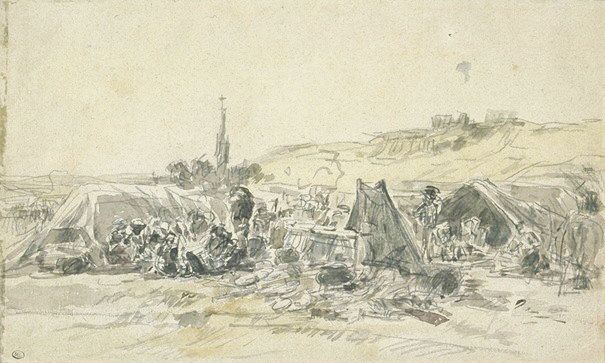
Croquis préparatoire pour le pardon de Sainte-Anne-la-Palud – Musée du Louvre – Département des Arts Graphiques
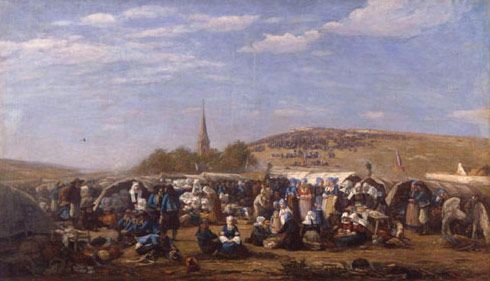
Le pardon de Sainte-Anne-la-Palud – Eugène Boudin – vers 1858 – Musée d’art moderne André Malraux – Le Havre
In his biography, Georges Jean Aubry (1882-1950) describes the character as follows: “He was tall, slightly stooped, his arms a little swaying […] his gait was slow and swaying: that of sailors who do not hurry when they are ashore. His voice was muffled, his speech slow, with the even intonation of those who speak little, and to whom what they say matters more than how they say it. The blue eye always on the lookout, the keen, inquisitive eye, in motion in the serene face, the mobile nostrils, always sniffing the wind […] The whole face offers itself […] as if uncovered to the wind, to the sun, to the rain, and in this serene abandonment, only the two blue eyes watch, seize […].
Eugène Boudin meets his future wife, Marie-Anne Guedes, from a farming background in Hanvec, near Faou. She became his guide to the domestic intimacy of the people with whom he came into contact, as he put it, “Bretonizing” himself. They married in 1863.
Boudin felt at home with this new Breton kinship, and became deeply attached to the country.
Here, he multiplied his sketches on the spot, patiently noting them down for documentary purposes, then working on his subject once he returned home.
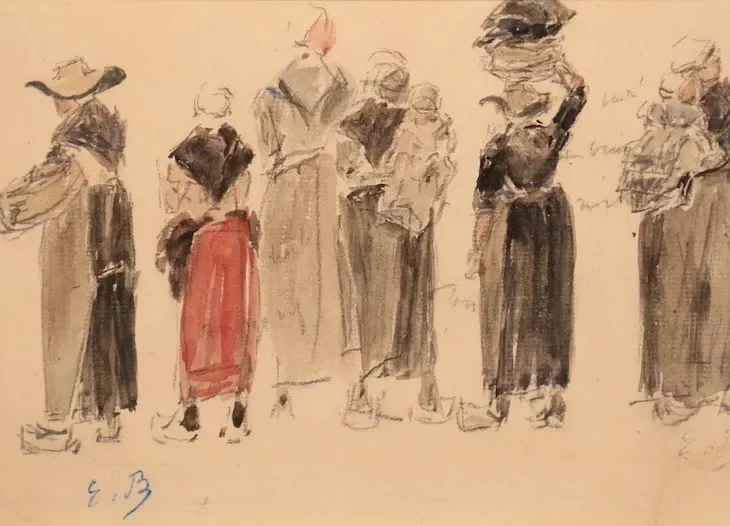
Groupe de bretonnes – Galerie de la Présidence- Paris

Intérieur d’église – Galerie de la Présidence – Paris
He doesn’t imagine painting imaginative subjects, because academicism is foreign to him.
He paints what he has around him, choosing his frames for the light: “I look at this light flooding the earth, quivering on the water, playing on the clothes, and I fail to see how much genius it takes to capture so many difficulties”.
In Douarnenez, he enthusiastically discovered the seaside landscapes:
“It’s impossible to miss Normandy, this country being perhaps even prettier”.
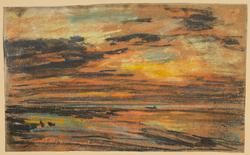
Soir sur la plage – pastel – Eugène Boudin
Boudin writes again to his brother Louis: “The sky becomes superb, wine-red, greenish, immense clouds are carried into the air and towards the distance. The sea laps and churns, moved by the boat as it plunges and rises in this vast lapping. At the crest of each wave, a luminous egret is carried away by the wind. As the sun clears, everything changes in the sky: silver clouds on a blue background, mistier vapors, but the wine-colored clouds still cross the atmosphere against this beautiful background.
All Eugène Boudin’s travels were in search of light in coastal regions.
He found “beautiful big skies, all tormented by clouds, crumpled with color, deep and exciting”.
When he liked a place, he returned for successive seasons, especially in summer and autumn. Le Faou, Landerneau, Douarnenez, Plougastel, Camaret in Finistère and Le Portrieux in the Côtes du Nord inspired him to paint some 400 pictures and 700 drawings and watercolors.
Although Brittany offered him an infinite variety of horizons, shifting skies and changing light, Eugène Boudin now divided his time between Deauville, where he had built a villa, and Paris, where he now lived. In 1898, feeling very weak, he asked to be taken to die “facing the sea”, and died in his Deauville home on the morning of August 8 of that year.

